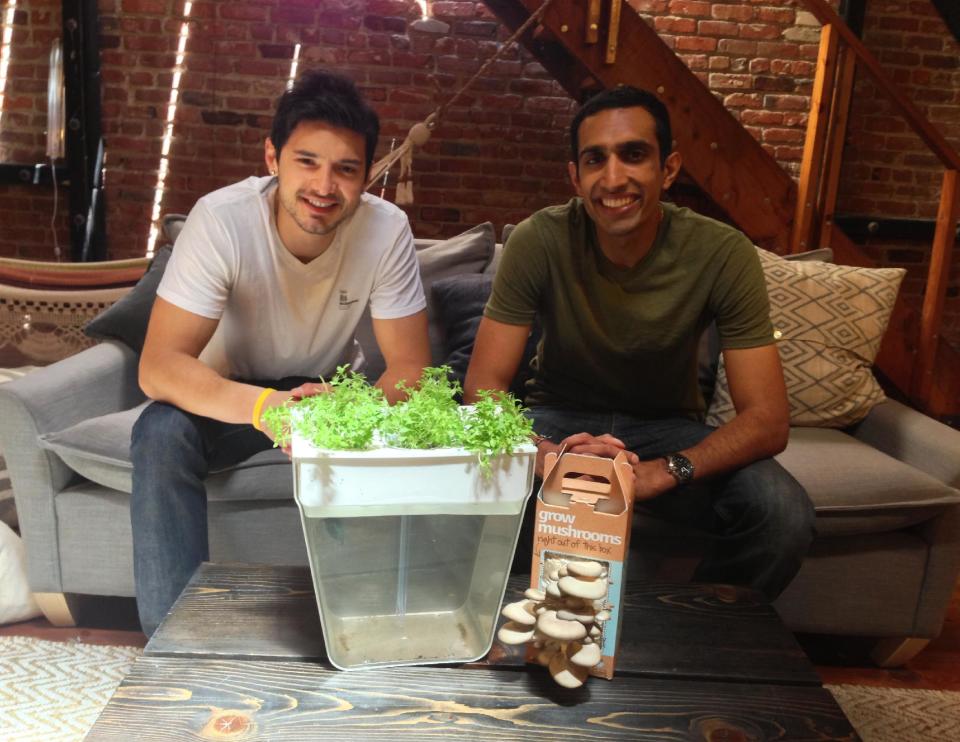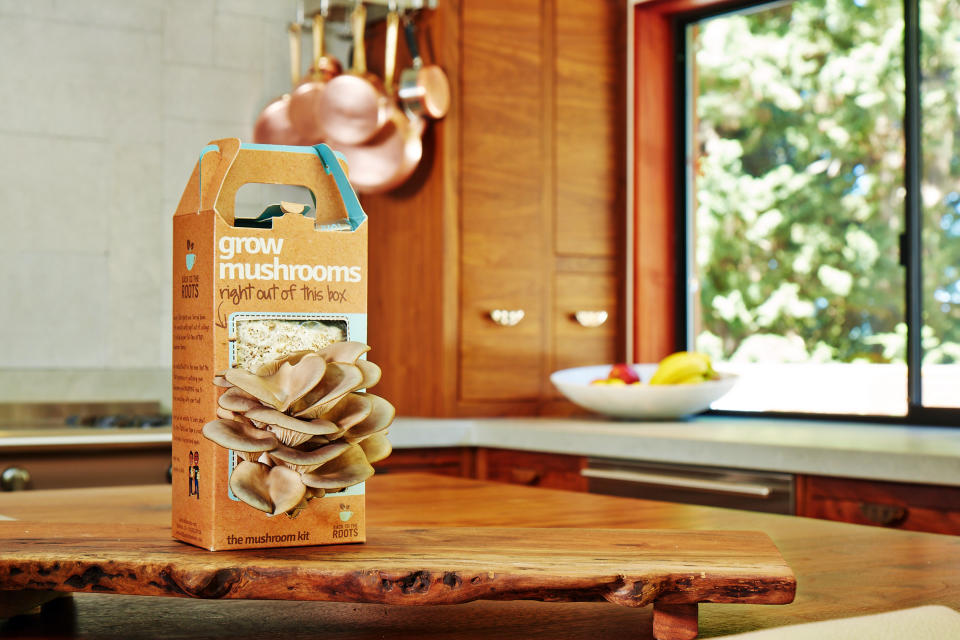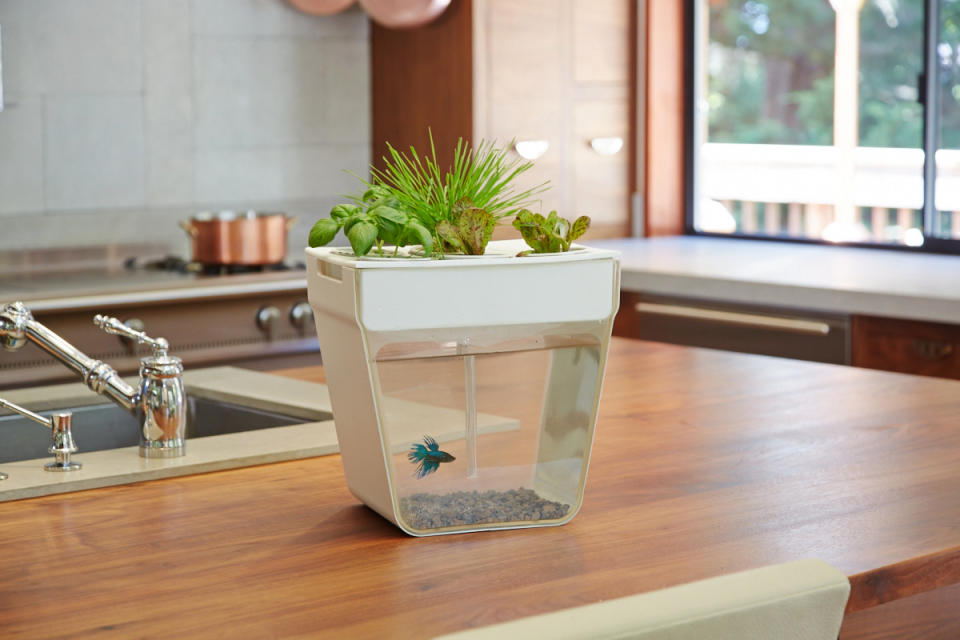Make room for mushrooms with grow-at-home kits
BERKELEY, Calif. (AP) — College students Alejandro Velez and Nikhil Arora were just a few months short of careers in corporate banking when they learned in a class lecture that it was possible to grow gourmet mushrooms on leftover coffee grounds.
Velez was so struck by the idea that he stayed after class to see if he could learn more. Well, no, said the professor, he didn't have any extra information. But he could connect Velez with the one other student who'd asked about the concept — Arora.
That was back in 2009, and since then the two have become friends and business partners in their company, Back to the Roots. Their Grow-Your-Own Mushroom Garden allows anyone to grow mushrooms off recycled waste. The company has grown to more than 30 employees and received an Empact100 award from the White House last fall, recognizing it as one of the top 100 entrepreneurial companies in the United States.
Their idea is to tap into the resurging interest in good food and in knowing where that food comes from, helping even city dwellers get in touch with their inner farmer.
"Everyone wants to connect with their food," says Arora.
The pair started small, experimenting in Velez's fraternity kitchen. At that point, Velez had signed an offer to work in investment banking, but, Arora says, they thought, "what the heck, let's give this thing a shot," and started 10 test buckets of mushrooms right before spring break.
When they returned, they found that nine of the buckets were washouts. But one was so gorgeous they took it to Chez Panisse, the famous Berkeley restaurant founded by Alice Waters, a pioneer in the eat fresh, eat local movement, as well as to the local Whole Foods Market. Spurred by the interest that initial crop generated — as well as a $5,000 grant for social innovation from the University of California Berkeley — they came to a decision: Banking could wait.
The first challenge was figuring out how to grow the mushrooms. They spent about eight months "just knee-deep in coffee grounds," says Arora.
Their first sale was 3.14 pounds to Whole Foods. Soon, they were growing 500 pounds a week. That's when they launched the grow-your-own kits.
"We realized that our real passion was around creating this experience," says Arora. "We had all these people asking if they can do it at home."
The kit comes as a box that can be set on a window sill, and just needs to be opened and misted twice a day (the mister is included). Available at Home Depot, Whole Foods and other stores, as well as online, the kits cost $19.95 and grows up to 1.5 pounds of pearl oyster mushrooms on soil that is 100 percent recycled-plant waste. The company has switched from coffee waste to corn husks, wheat bran and sawdust as the growing medium, and has partnered with Gourmet Mushrooms in Sebastopol to produce the kits. The mushrooms take about 10 days to grow; two crops are guaranteed and three are not unusual.
Back to the Roots is one of several grow-your-own kits on the market, which has seen rising interest in fresh mushrooms, according to the San Jose-based Mushroom Council.
Kathleen Preis, the council's marketing coordinator, cites several factors including research, much of it sponsored by the council, on mushrooms' nutritive benefits (they're high in Vitamin D and potassium, for instance). Meanwhile, more varieties have become readily available.
"Consumers are seeing mushrooms on the shelves. They're seeing them in TV shows. They're seeing these growing kits. There are more recipes for them. We've definitely noticed shipments have gone up, consumption has gone up," says Preis.
The Council reported in October that retail sales of mushrooms in the summer of 2012 was just over 3 percent greater than summer 2011. The USDA's National Agricultural Statistic Service, which reports annually on domestic mushroom production, reported in August 2012 that the value of domestic mushroom production topped $1 billion in 2012 for the second year in a row. The 900-million-pound crop from 2011-2012 exceeded the previous crop year's volume by 4 percent and value by 8 percent.
A new way of using mushrooms is adding them, finely chopped, to meat as a way to add nutrients and reduce calories without shrinking portion sizes. Meanwhile, consumers are branching out a little. Although the familiar, white button mushrooms are still No. 1, shipments of specialty mushrooms — i.e. cremini, portabella — are also rising.
Back to the Roots, now based in Oakland, will introduce a shiitake grow-your-own kit later this year. They're launching a new product this summer, AquaFarm, a 3-gallon, self-cleaning fish tank that grows food on top of the tank. You feed the fish and the fish fertilize the plants. A possible combination is betta fish with basil or wheat grass growing on the tank.
"It's like an ecosystem right there on your kitchen counter," says Arora.
___
More online:
http://www.backtotheroots.com
http://www.mushroominfo.com




